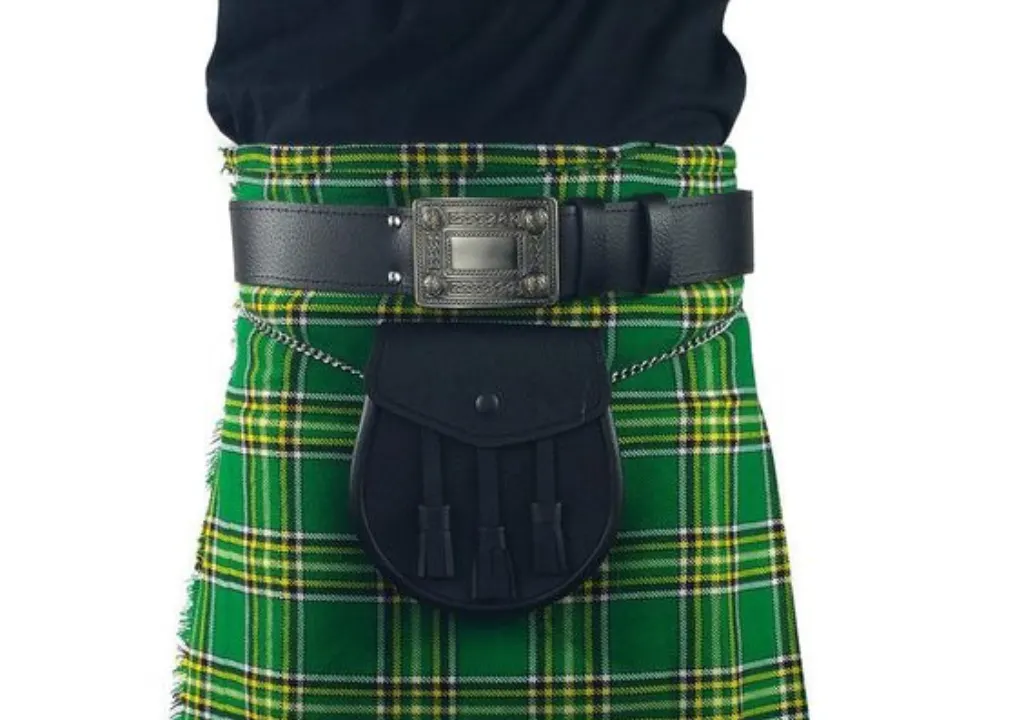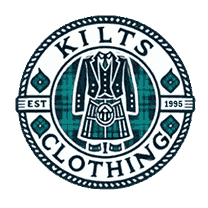The Importance of a Quality Kilt Belt: What to Look for

kilt accessories, a symbol of Scottish heritage and pride, are more than just a piece of clothing; they represent a deep connection to tradition, identity, and history. Just as the kilt itself is a significant garment, the kilt accessories that accompany it, such as the sporran, kilt pin, and hose, also play an essential role in completing the traditional outfit.
Among these accessories, the kilt belt stands out not only for its practical purpose but also for its aesthetic contribution. A quality kilt belt is essential for both the function and form of the entire ensemble.
Understanding the Role of a Kilt Belt
A kilt belt is not just any ordinary belt. Unlike belts worn with trousers, which are primarily for holding up pants, a kilt belt serves a more decorative role. Kilt accessories are designed to be worn at the natural waist, which is higher than where trousers sit, typically around the navel area.
The kilt itself, with its pleats and fabric, is already well-fitted, so the belt's primary function is to add visual interest, secure the kilt in place, and enhance the wearer's silhouette.
What to Look for in a Quality Kilt Belt
When selecting a kilt belt, there are several key factors to consider to ensure you are choosing a quality product. Here's what to look for:
Material Quality
The first and foremost consideration is the belt's material. Genuine leather is the traditional choice for kilt belts due to its strength, flexibility, and classic appearance. Look for belts made from full-grain leather, which is the highest-quality and most durable type.
It ages beautifully, developing a patina over time that adds to its character. Avoid synthetic materials, as they tend to wear out quickly and lack the authentic look and feel of leather.
Craftsmanship
Examine the belt's craftsmanship. Quality kilt belts are handcrafted by skilled artisans who pay attention to detail. Check the stitching; it should be tight, even, and done with a strong thread. The edges of the belt should be smooth and finished, not rough or frayed. Handmade belts, though often more expensive, are worth the investment as they offer superior durability and aesthetic appeal.
Buckle Design
The buckle is a focal point of the kilt belt and is where much of the decoration and symbolism can be found. Quality kilt belts feature buckles made from materials like solid brass or pewter, often with intricate Celtic designs, clan crests, or other traditional motifs. When choosing a buckle, ensure it complements the rest of your kilt outfit. Some belts come with removable buckles, allowing you to switch designs according to the occasion or personal preference.
Width and Size
Kilt belts are typically wider than regular belts, usually around 2.5 to 3 inches. This width is necessary to suit the proportions of the kilt and to provide a balanced appearance. When selecting a belt, ensure that it is the correct width for your kilt loops. The size of the belt is also crucial; it should fit comfortably around your waist with some room for adjustment. Most quality belts offer a range of sizes, with holes for adjusting the fit.
Color and Finish
While black and brown are the most common colors for kilt belts, reflecting traditional styles, other colors may be available depending on your preference and the formality of the event. The belt's finish should be smooth and even, with a slight sheen that adds to its polished look. Avoid overly shiny finishes, as these can appear cheap and detract from the overall aesthetic.
Versatility
A good kilt belt should be versatile enough to be worn with different kilt outfits. Whether you're dressing for a formal event or a casual day out, the belt should enhance your look without overshadowing other elements of your attire. Some kilt belts come with interchangeable buckles, allowing for even greater versatility.
The Importance of a Quality Kilt Belt
Investing in a quality kilt belt is crucial for several reasons:
Durability and Longevity
A well-crafted kilt belt is made from high-quality materials such as genuine leather, which ensures durability and long-term use. Given that a kilt belt is often paired with heavy wool kilts, the belt must be sturdy enough to provide adequate support without stretching or warping over time. A quality belt, with proper care, can last for decades and become a cherished heirloom.
Aesthetic Appeal
A kilt belt adds a finishing touch to the kilt outfit. It draws attention to the waistline, providing a visual break between the kilt and the upper body. A high-quality belt, often adorned with an intricate buckle, can elevate the entire look, making it suitable for formal occasions, Highland games, or casual gatherings.
Comfort and Fit:
Comfort is a significant factor when wearing a kilt for extended periods. A poorly made belt may dig into the skin, causing discomfort or even pain. Quality belts are designed to fit comfortably around the waist, with adjustable features that allow for a snug yet non-restrictive fit. This ensures that the belt stays in place without causing any irritation.
Cultural Significance:
The kilt and its accessories are steeped in tradition. Wearing a quality kilt belt made by skilled artisans, often using time-honored methods, connects the wearer to their heritage. It symbolizes respect for Scottish culture and the craftsmanship that goes into producing these traditional garments.
Caring for Your Kilt Belt
Once you've invested in a quality kilt belt, proper care is essential to maintain its appearance and longevity. Here are some tips:
- Regular Cleaning: Wipe down your belt with a damp cloth to remove dust and dirt. For deeper cleaning, use a leather cleaner appropriate for the type of leather your belt is made from.
- Conditioning: Leather can dry out over time, leading to cracks and stiffness. Regularly apply a leather conditioner to keep the belt supple and prevent damage.
- Storage: Store your kilt belt in a cool, dry place away from direct sunlight, which can cause the leather to fade. Avoid folding or creasing the belt; instead, hang it or lay it flat to preserve its shape.
- Avoid Excessive Moisture: While leather is durable, it can be damaged by excessive moisture. If your belt gets wet, allow it to air dry naturally. Never use heat to dry leather, as this can cause it to harden and crack.
Common Mistakes to Avoid When Choosing a Kilt Belt
When purchasing a kilt belt, it's easy to make mistakes if you're not familiar with what to look for. Here are some common pitfalls to avoid:
- Choosing the Wrong Size: A belt that is too tight or too loose will be uncomfortable and may not sit properly on your waist. Always measure your waist accurately and choose a belt size that allows for some adjustment.
- Overlooking the Buckle Design: The buckle is a prominent feature of the kilt belt, so it's important to select one that matches your kilt and overall style. Avoid overly ornate designs if they clash with the simplicity of your outfit.
- Buying Cheap Imitations: It can be tempting to go for a cheaper, synthetic belt, but these rarely last long and can detract from the authenticity of your kilt ensemble. Invest in a genuine leather belt from a reputable supplier for the best results.
- Ignoring Craftsmanship: Mass-produced belts often lack the attention to detail found in handmade belts. Poor stitching, uneven edges, and subpar materials are signs of inferior craftsmanship. Choose a belt made by experienced artisans to ensure quality.
Conclusion
A kilt belt is more than just a part of kilt accessories; it is a key component of the traditional kilt outfit that adds both functionality and flair. By investing in a quality kilt belt made from durable materials and crafted with care, you enhance not only the appearance of your ensemble but also your connection to Scottish heritage.
When choosing a kilt belt, consider factors such as material, craftsmanship, buckle design, and size to ensure that you select a belt that will stand the test of time. With proper care, your kilt belt can become a cherished item, accompanying you to numerous events and celebrations for years to come.
FAQs
The belt on a kilt is simply called a kilt belt. It is wider and more decorative than regular belts.
A kilt buckle is a decorative metal clasp used to secure the kilt belt at the waist. It often features Celtic designs or clan symbols.
To attach a belt to a kilt, slide the kilt belt through the belt loops on the back of the kilt and fasten it at the front using the kilt buckle. Adjust for a snug fit at your waist.



